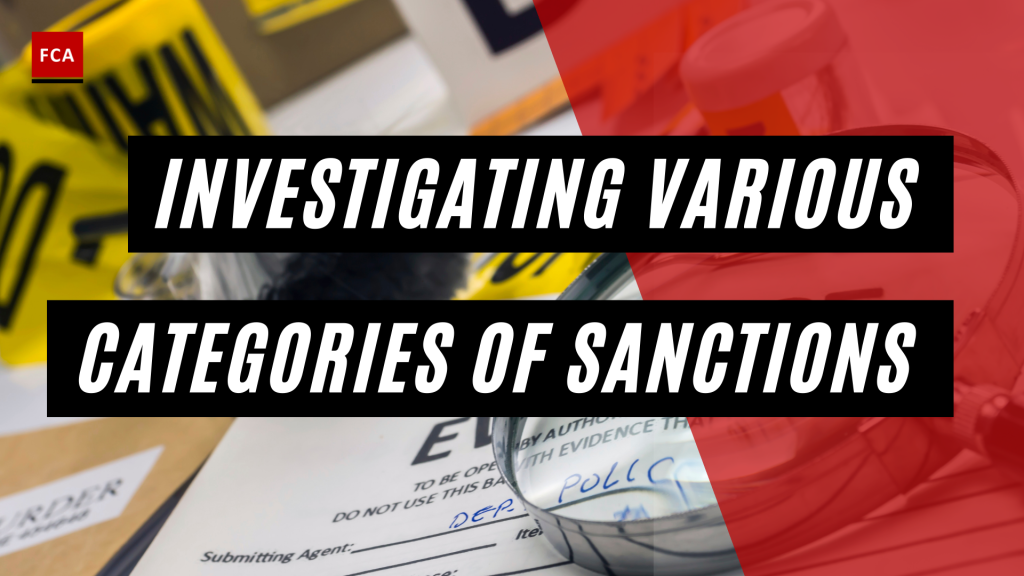Sanctions play a vital role in international relations, acting as a powerful tool to address a variety of global challenges. From deterring aggression to enforcing international law, sanctions often serve as the bridge between diplomacy and military action. But do we truly understand the complexities and implications of the different types of sanctions? In this blog post, we will explore the various categories of sanctions, their role in diplomacy, and their real-world applications, providing you with a comprehensive understanding of this critical instrument in the realm of international relations.
Key Takeaways
Sanctions are used in international relations to protect national security, uphold laws, and promote peace.
They can be economic, trade, or financial sanctions with different characteristics and functions.
Diplomatic efforts also play a role in the implementation of sanctions along with preventive measures for monitoring compliance.
Understanding Sanctions in International Relations
Sanctions are political and economic measures employed by countries and international organizations to protect national security interests, uphold international law, and maintain international peace and security.
These political and economic decisions are versatile tools that can be adapted to address a wide range of issues, from human rights abuses to environmental concerns. They serve as a flexible mechanism that can be tailored to the specific needs and conditions of the situation at hand. Utilized judiciously, sanctions can pose a significant deterrent to aggressive actions, illicit activities, or behaviors that violate international norms. They can be imposed in a variety of forms, including trade restrictions, financial penalties, diplomatic measures, or even military actions.
The effectiveness of sanctions, however, heavily depends on the international community’s unity and commitment to enforcing them. Furthermore, the impact of sanctions often extends beyond the immediate target, influencing the global economic landscape and potentially affecting innocent civilians in the targeted regions.
Therefore, while sanctions are a powerful tool in the international relations toolkit, their use must be carefully considered and strategically planned.
The United Nations Security Council and the European Union are two key actors in the implementation of sanctions, working together to coordinate efforts and ensure their effectiveness.
United Nations Security Council
The UN Security Council bears the responsibility of safeguarding global peace and security. Its duties encompass the implementation of economic, diplomatic, or military measures, including sanctions.
The Security Council, as a critical part of the United Nations system, influences the international sanctions landscape decisively. It imposes sanctions on countries, entities, and individuals that pose threats to international peace and security, orchestrating efforts among member states for maximal effectiveness.
The European Union, on the other hand, plays a supporting role in the implementation of United Nations sanctions. The EU implements all sanctions adopted by the UN Security Council and engages in ongoing dialogue with the United Nations to facilitate coordination of actions among EU member states. This collaborative approach ensures that sanctions are implemented effectively, ultimately contributing to the preservation of international peace and security.
European Union Sanctions
The European Union has the ability to impose autonomous sanctions, which are measures the Council may decide to implement of their own volition. In some cases, the EU may choose to supplement United Nations sanctions by instituting additional measures, creating what is known as a mixed sanctions regime. This flexibility allows the EU to respond to political challenges and developments that are contrary to its objectives and values.
These autonomous sanctions, wielded by the European Union, serve as a testament to the EU’s commitment to uphold international law and maintain peace and security. They provide the EU with an independent tool to respond swiftly and decisively to situations that threaten its stability, values, and interests. The mixed sanctions regime, on the other hand, represents the EU’s commitment to cooperate and align its actions with the broader international community, particularly the United Nations. It demonstrates the EU’s ability to adapt and respond to complex international situations, combining its own measures with those of the United Nations to maximize the effectiveness of the sanctions.
In essence, the European Union’s ability to impose autonomous sanctions and create a mixed sanctions regime is a manifestation of its strategic autonomy and its commitment to multilateralism, both of which are central to its foreign policy.
Sanctions play a significant role in the EU’s Common Foreign and Security Policy, serving to:
Avert conflict
Address existing crises
Bolster peace, democracy, and the rule of law
Uphold human rights and international law
By leveraging the power of sanctions, the EU can exert considerable pressure on countries, entities, and individuals who pose a threat to its interests, values, and principles.
Categories of Sanctions

Sanctions, a crucial tool in international relations, are primarily categorized into three types – economic, trade, and financial sanctions. Each of these types serves a distinct purpose and objective, thereby playing a unique role in shaping global interactions.
Economic sanctions target the overall economy of a country, aiming to disrupt its financial stability and growth. Trade sanctions, on the other hand, focus on controlling the exchange of goods and services, thereby influencing the trading capabilities of the targeted nation. Financial sanctions are targeted measures that directly impact the financial activities of specific individuals, organizations, or countries.
Understanding the differences among these categories, their specific objectives and the ways in which they influence the targeted entities is key to fully understanding the extent of sanctions and their impact on international relations. This understanding provides the foundation for effective policy-making, strategic planning, and decision-making in the complex realm of international relations.
We will further dissect each category in the subsequent sections, highlighting their distinct characteristics and functions.
Economic Sanctions
Economic sanctions are a form of punishment used in international relations to bring about a change in behavior. They involve commercial and financial penalties, typically imposed by one or more countries against another state, group, or individual. These measures can range from environment sanctions, trade restrictions, financial penalties, and arms embargoes, which seek to prohibit the export and import of weapons and military equipment, to technical assistance prohibitions, which aim to prevent countries subject to embargoes from acquiring related services and information.
The ultimate goal of economic sanctions is to hinder the economy of the targeted country or entity.
The Restricted Goods and Technologies List is another example of economic sanctions in action. This list, developed by Canada, outlines a wide array of items in domains such as:
electronics
computers
telecommunications
sensors
lasers
By restricting the export of these goods and technologies, countries can exert economic pressure on the targeted entities, compelling them to change their behavior or face further consequences.
Trade Sanctions
Trade sanctions are measures designed to restrict the import and export of goods and services between countries. They can take various forms, such as embargoes, which are partial or complete prohibitions of commerce and trade with a particular state or group of countries. Export and import restrictions are another example of trade sanctions, impeding the economic activity or certain aspects of the economy of the affected country.
Canada’s Restricted Goods and Technologies List is one instance of trade sanctions in practice, as it prohibits Canadians from exporting certain goods and technologies to Russia. These types of sanctions aim to exert pressure on the targeted country or entity, forcing them to comply with international norms or face further consequences. In some cases, exemptions may apply, such as allowing the export of goods for humanitarian aid or disaster relief.
Financial Sanctions
Financial sanctions target specific individuals or entities by freezing their assets and prohibiting transactions. These measures can have a significant impact on the targeted individuals or entities, effectively cutting them off from the global financial system and making it difficult for them to conduct business or generate income. Financial institutions play a crucial role in implementing these sanctions, which can be considered as financial restrictions. Examples of financial sanctions include asset freezes, which prevent individuals or entities from accessing their property or other assets within a certain jurisdiction, and financial prohibitions, which restrict persons from engaging in financial transactions with certain listed persons.
In some cases, exceptions may apply to financial sanctions, such as transactions related to humanitarian aid or pre-existing contracts. These exceptions are intended to minimize the unintended consequences of sanctions on innocent populations while still applying pressure on the targeted individuals or entities to comply with international norms and regulations.
Diplomatic Efforts and Sanctions
Diplomatic efforts and sanctions often work hand in hand to address political challenges and human rights violations. Diplomacy plays a vital role in the negotiation and implementation of sanctions, providing a means for countries to express their dissatisfaction with certain actions and broker resolutions.
This section will delve into the interplay between diplomatic efforts and sanctions, underlining the significant role of diplomacy in this context.
Diplomatic Sanctions
Diplomatic sanctions are a way for countries to display their disapproval of certain actions. They are employed through diplomatic and political means, rather than adjusting economic or military relations. Examples of diplomatic sanctions include:
The interruption of diplomatic relations with the targeted nation
Diplomatic isolation
Suspension of diplomatic relations
The expulsion of diplomats
These measures serve to convey official dissatisfaction, encourage the targeted entity to change its behavior, and publicly censure those who violate international standards. Diplomatic sanctions can be an effective means of coercive diplomacy, providing a lower-risk and more cost-effective alternative to military force.
The Role of Diplomacy
Diplomacy is integral in the sanctions process, as it helps to convey official dissatisfaction, apply pressure on the relevant entity to alter its conduct, and publicly censure those who contravene international standards. Diplomatic efforts also play a critical role in coordinating and implementing collective sanctions across multiple nations, ensuring that these measures are effective and achieve their intended objectives.
Moreover, diplomacy serves as an alternative to military force in certain situations, allowing countries to address international disputes in a more cost-effective and lower-risk manner. By leveraging the power of diplomacy and sanctions, countries can work together to uphold international norms and address global challenges.
Targeted vs. Comprehensive Sanctions
Targeted and comprehensive sanctions are two distinct approaches to imposing sanctions, each with its own set of advantages and disadvantages. Targeted sanctions focus on specific individuals or entities, minimizing the unintended consequences on innocent populations, while comprehensive sanctions affect an entire country or region, often leading to broader impacts.
This section will juxtapose these two types of sanctions, offering insights into their individual strengths and weaknesses.
Targeted Sanctions
Targeted sanctions are measures taken by countries to restrict trade, travel, and financial relations with specific individuals, companies, organizations, or commodities. These sanctions are intended to be focused on particular targets rather than imposing broad restrictions on an entire country or population. Examples of targeted sanctions include travel bans, asset freezes, and arms embargoes.
By focusing on specific targets, targeted sanctions have several advantages:
They minimize the unintended consequences on innocent populations
They allow for more precise and effective measures to address the underlying issues
This approach can lead to more targeted pressure on the entities in question
It can ultimately compel them to change their behavior or face further consequences.
Comprehensive Sanctions
Comprehensive sanctions, on the other hand, typically forbid all direct or indirect imports/exports, trade brokering, financing, or aiding with respect to most goods and dealings with a country’s government and virtually all other dealings involving the targeted country. These measures are far-reaching and can encompass:
Restrictions on trade
Financial transactions
Investments
Other activities
While comprehensive sanctions can have a significant influence on the affected country or region, they often come with a range of unintended consequences, such as economic adversity, political turbulence, and social disquietude. As such, it is crucial for policymakers to carefully weigh the potential benefits and drawbacks of comprehensive sanctions before deciding on their implementation.
Monitoring and Compliance

Monitoring and compliance are crucial to the success of sanctions, as they guarantee adherence to the measures and prompt detection and resolution of any violations.
We will examine the two pivotal aspects of monitoring and compliance – the sanctions screening process and preventive measures – in this section, discussing their contribution to the overall effectiveness of sanctions programs.
Sanctions Screening Process
The sanctions screening process is the practice of screening individuals and entities against lists of sanctioned parties in order to:
Detect, prevent, and disrupt financial crime
Ensure effective sanctions compliance
Prevent persons and entities subject to sanctions from gaining access to the financial system
Prevent them from partaking in activities that could be detrimental to international security.
The screening process involves the utilization of various tools and techniques, including databases, financial transaction analysis, and intelligence sources, to identify and block transactions that may be in violation of sanctions regulations. By implementing a comprehensive and effective sanctions screening process, countries and organizations can significantly enhance their compliance efforts and minimize the risk of sanctions violations.
Preventive Measures
Preventive measures refer to the implementation of policies and procedures to ensure compliance with sanctions regulations and to prevent the occurrence of a particular event or situation. Examples of preventive measures include the establishment of internal controls, such as policies and procedures, sanctions screening processes, and a risk-based approach to compliance.
By implementing and enforcing these preventive measures, countries and organizations can ensure that they are adhering to sanctions regulations and minimizing the risk of violations. Furthermore, compliance with sanctions regulations facilitates the attainment of the sanctions’ intended objectives, ultimately contributing to the preservation of international peace and security.
Real-World Examples of Sanctions
Real-world examples of sanctions demonstrate their use in addressing various international issues and conflicts. The League of Nations imposed sanctions on Yugoslavia in 1921 and Greece in 1925. In more recent history, the United States has implemented sanctions on countries engaged in terrorism, nuclear proliferation activities, human rights violations, and annexation of foreign territory.
These examples illustrate the diverse range of issues that can be addressed through sanctions and the varying degrees of success that can be achieved. By examining these real-world cases, we can gain valuable insights into the effectiveness of sanctions in achieving their intended objectives and the challenges that may arise in their implementation.
Summary and Conclusion
In conclusion, understanding the various types of sanctions and their implications in international relations is crucial for policymakers, businesses, and individuals alike. From economic and trade sanctions to diplomatic efforts, these measures play a vital role in addressing global challenges and maintaining international peace and security.
By examining real-world examples and exploring the role of monitoring and compliance, we can gain a better understanding of the complexities and nuances involved in the implementation of sanctions. As the world continues to evolve, the importance of understanding and effectively utilizing sanctions in the pursuit of international objectives will only grow.
Frequently Asked Questions
This section will tackle some common queries about sanctions, offering additional information on various facets of sanctions, encompassing their types, purposes, and their function in anti-money laundering initiatives.
What are the different types of sanctions in the AML?
Question: What are the different types of sanctions in the AML?
Answer: The AML incorporates economic sanctions, international sanctions, embargo, diplomatic sanctions, travel bans, asset freezes, trade embargoes, and other limitations.
What are the 4 types of sanctions?
Question: What are the 4 types of sanctions?
Answer: The four types of sanctions are diplomatic, economic, military, and sport.
What are sanctions in terms of AML?
Question: What are sanctions in terms of AML?
Sanctions are measures taken by governments or international organizations to restrict or curtail specific activities or persons in order to achieve a political or economic objective. These measures can include travel bans, asset freezes, and other restrictions, often referred to as sanctions imposed, as a form of diplomatic response.
What are the different types of economic sanctions?
Question: What are the different types of economic sanctions?
Answer: The various types of economic sanctions include travel bans, asset freezes, arms embargoes, capital restraints, foreign aid reductions, trade restrictions, and trade embargoes.








